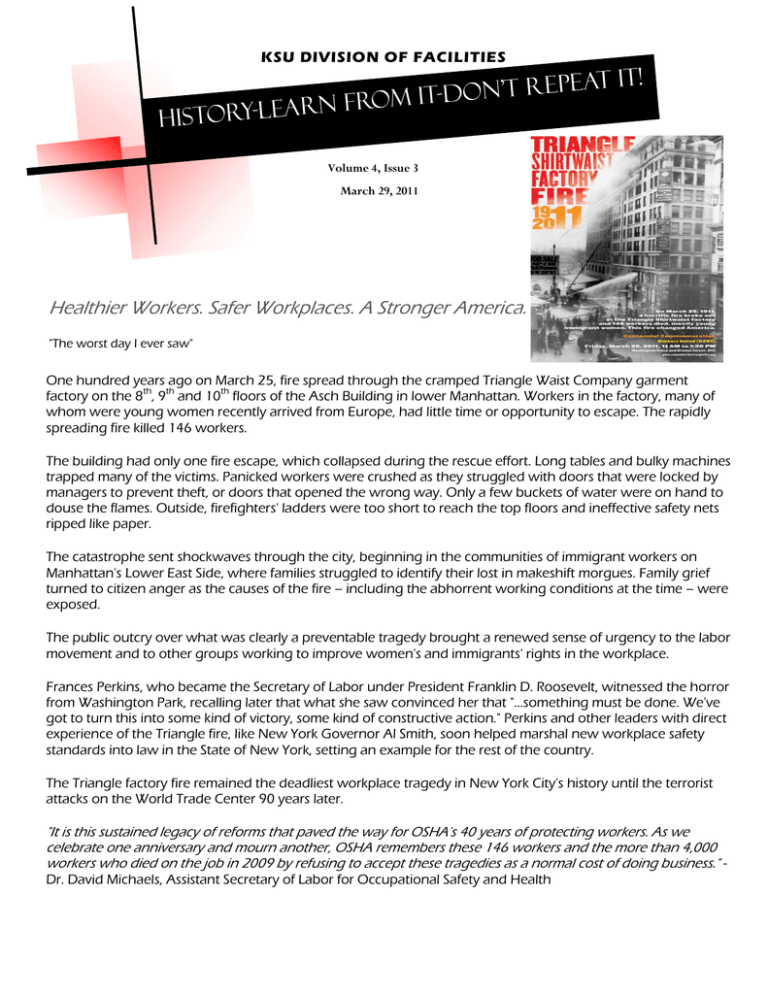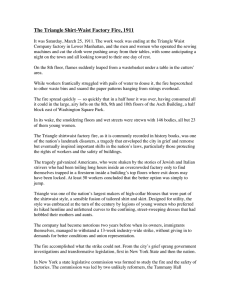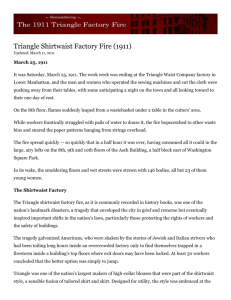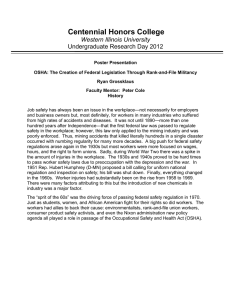epeat it! rom it-Don’t R History-Learn f
advertisement

KSU DIVISION OF FACILITIES n’t Repe o -D it m o r rn f History-Lea at it! Volume 4, Issue 3 March 29, 2011 Healthier Workers. Safer Workplaces. A Stronger America. "The worst day I ever saw" One hundred years ago on March 25, fire spread through the cramped Triangle Waist Company garment factory on the 8th, 9th and 10th floors of the Asch Building in lower Manhattan. Workers in the factory, many of whom were young women recently arrived from Europe, had little time or opportunity to escape. The rapidly spreading fire killed 146 workers. The building had only one fire escape, which collapsed during the rescue effort. Long tables and bulky machines trapped many of the victims. Panicked workers were crushed as they struggled with doors that were locked by managers to prevent theft, or doors that opened the wrong way. Only a few buckets of water were on hand to douse the flames. Outside, firefighters' ladders were too short to reach the top floors and ineffective safety nets ripped like paper. The catastrophe sent shockwaves through the city, beginning in the communities of immigrant workers on Manhattan's Lower East Side, where families struggled to identify their lost in makeshift morgues. Family grief turned to citizen anger as the causes of the fire – including the abhorrent working conditions at the time – were exposed. The public outcry over what was clearly a preventable tragedy brought a renewed sense of urgency to the labor movement and to other groups working to improve women's and immigrants' rights in the workplace. Frances Perkins, who became the Secretary of Labor under President Franklin D. Roosevelt, witnessed the horror from Washington Park, recalling later that what she saw convinced her that "…something must be done. We've got to turn this into some kind of victory, some kind of constructive action." Perkins and other leaders with direct experience of the Triangle fire, like New York Governor Al Smith, soon helped marshal new workplace safety standards into law in the State of New York, setting an example for the rest of the country. The Triangle factory fire remained the deadliest workplace tragedy in New York City's history until the terrorist attacks on the World Trade Center 90 years later. "It is this sustained legacy of reforms that paved the way for OSHA's 40 years of protecting workers. As we celebrate one anniversary and mourn another, OSHA remembers these 146 workers and the more than 4,000 workers who died on the job in 2009 by refusing to accept these tragedies as a normal cost of doing business." Dr. David Michaels, Assistant Secretary of Labor for Occupational Safety and Health PAGE 2 HISTORY-LEARN FROM IT-DON’T REPEAT IT!





